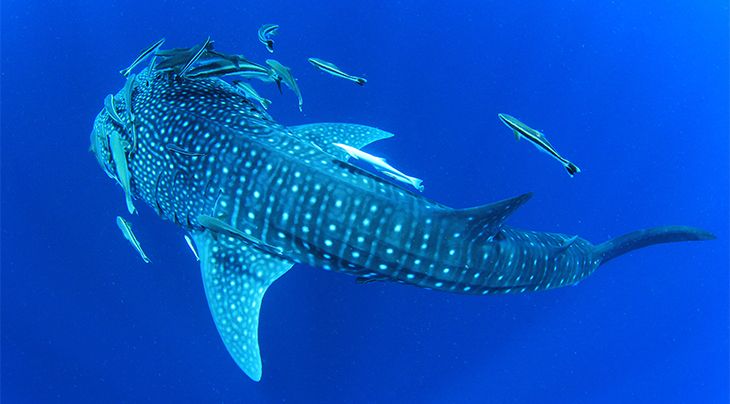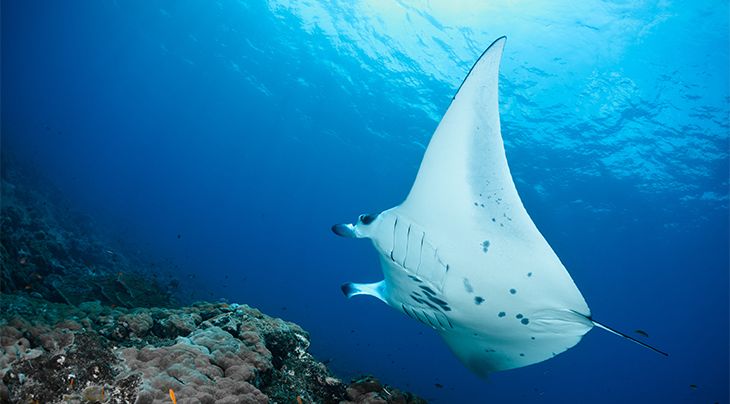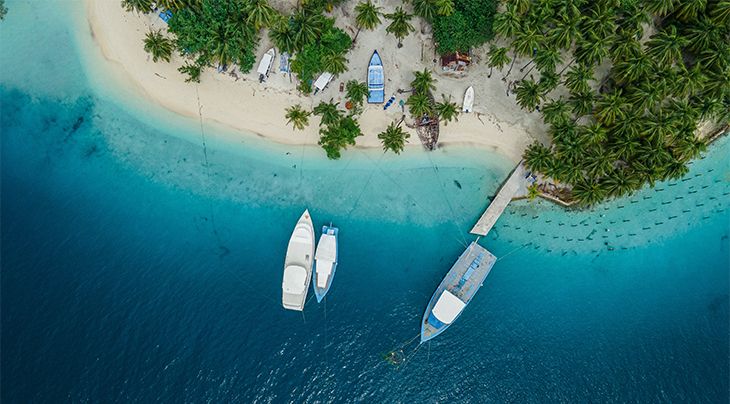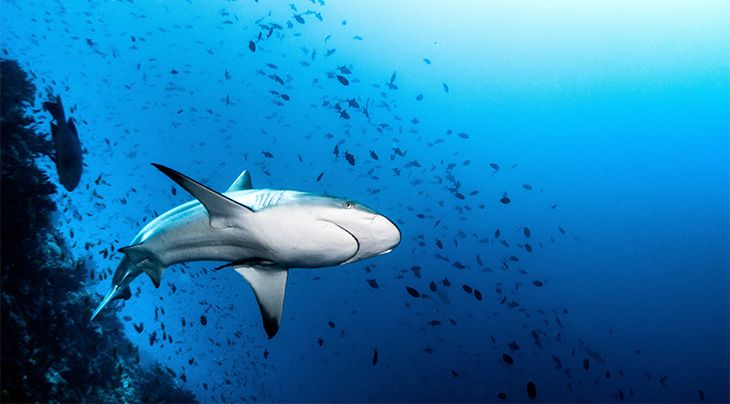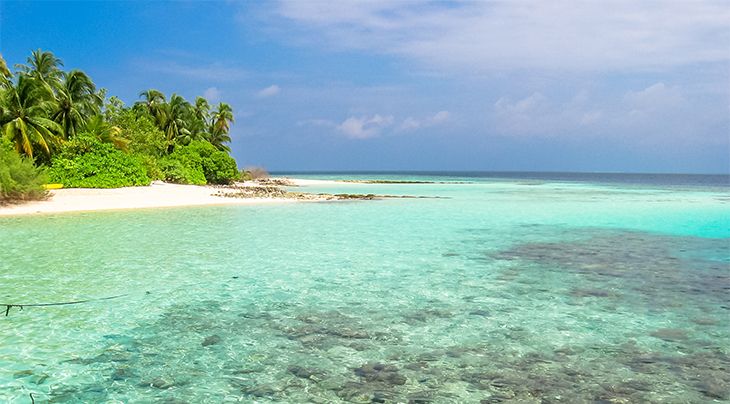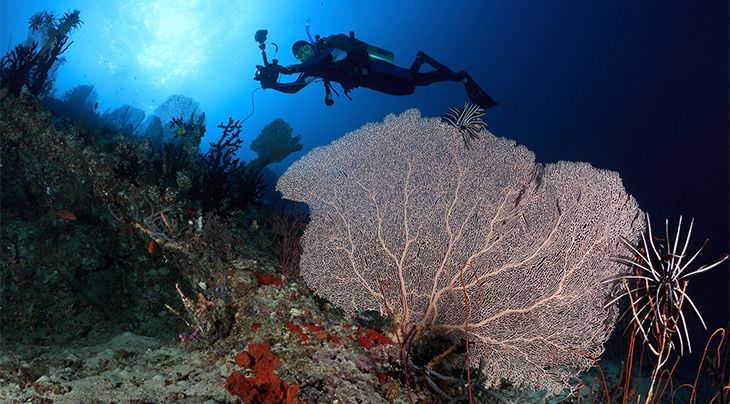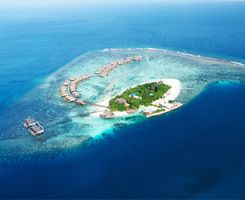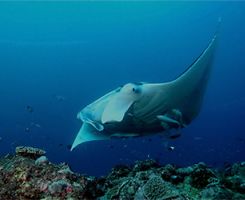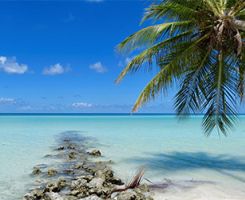- More More
- Blog
- Inspire me
- Groups
- Offers More
- Dive Courses More
- Liveaboards
More

Liveaboard Trips
On-board accommodation offering the opportunity to live right over the dive sites and to experience secluded dives...
Diving regions...
- LATEST AVAILABILITY BY REGION
- Red Sea availability
- Maldives availability
- Indonesian availability
- Socorro Mexico availability
- Galapagos availability
- ALL LIVEABOARD DIVING REGIONS
- Bahamas
- Bikini Atoll
- Caribbean
- Cocos Island
- Destinations
MoreDIVING REGIONS...
Our Top destinations....Why not try....
Find a trip
- Resort
- Liveaboard
Central Maldives Atolls
Maldives Facts
Area: 298 sq. km
Population: 338,000
Language: Dhivehi, English
Time: GMT + 5
Electricity: 240v AC, 50Hz
Plugs: Mainly 3-pin UK style
The Central Atolls of the Maldives—North & South Malé, North & South Ari, and Rasdhoo Atolls—are a diver’s dream. This region offers a perfect blend of accessible house reefs, thrilling boat dives, and an abundance of marine life, catering to divers of all levels. For those looking to explore the best dive sites across the whole region, liveaboards are a popular choice, providing easy access to remote and pristine locations. Whether you're learning to dive, seeking encounters with manta rays and whale sharks, or enjoying a liveaboard adventure, the Central Atolls are a must-visit diving destination.
Learning to Dive
The Central Atolls are an excellent place for beginners to start their diving journey. Resorts across the North and South Malé Atolls offer calm lagoons with gentle currents, ideal for learning the basics in a safe and relaxed environment. Dive centres are plentiful, providing professional PADI and SSI courses, from entry-level Open Water certifications to more advanced training.
The abundance of vibrant coral reefs and diverse marine life means even novice divers can experience unforgettable underwater encounters. Many house reefs and shallow dive sites are easily accessible from resorts, allowing learners to gain confidence in stunning surroundings without venturing too far from shore. For those wanting to explore further, boat trips are readily available, offering deeper dive sites once learners are comfortable.
Qualified Divers
For qualified divers, the Central Atolls offer an exciting variety of dive sites that can be explored from either land-based resorts or liveaboards. Liveaboards are particularly popular here, offering divers the chance to explore the full range of dive sites, from the iconic Rasdhoo Atoll with its shark encounters to the manta ray cleaning stations in the South Ari Atoll.
Liveaboard trips typically visit a mix of channels, thilas (pinnacles), and deep drop-offs, offering a variety of dive experiences, from thrilling drift dives to tranquil coral gardens. Many sites are suitable for advanced divers due to stronger currents, particularly around the channel entrances where pelagic species like reef sharks, eagle rays, and barracudas often patrol.
Whether you're a seasoned resort diver or looking for an adventure aboard a liveaboard, the Central Atolls will not disappoint.
House reef diving
One of the key attractions of the Central Atolls is the abundance of vibrant house reefs surrounding many resorts. These reefs are easily accessible directly from the shore, making them ideal for a relaxed dive or snorkel at any time of day. House reefs in North and South Malé Atolls are teeming with colourful corals, reef fish, and even the occasional turtle or reef shark, offering an impressive variety of marine life just a few fin kicks from your villa.
House reefs are perfect for divers who prefer flexibility, allowing for spontaneous dives without needing to plan a boat trip. With shallow depths and gentle conditions, they are ideal for divers of all experience levels, including beginners or those looking to enjoy some leisurely underwater photography. Experienced divers can also take advantage of night diving opportunities, where encounters with nocturnal creatures like lobsters, octopuses, and moray eels are common.
Boat diving
While house reefs offer convenience, boat diving in the Central Atolls opens up a world of spectacular dive sites that can’t be accessed from shore. Dive boats depart daily from resorts, visiting renowned sites like the Maaya Thila in the North Ari Atoll, famous for its vibrant coral formations and frequent encounters with white-tip reef sharks.
Boat diving also allows you to experience the exhilarating drift dives for which the Maldives is famous. The channels between the atolls funnel nutrient-rich water, attracting large pelagic species such as manta rays, whale sharks, and schools of barracuda. Sites like Fish Head in the North Ari Atoll and Kandooma Thila in the South Malé Atoll are just a few examples of the must-visit boat diving spots, known for their incredible biodiversity and underwater topography.
Dive sites
The Central Atolls of the Maldives boast some of the country's most diverse and sought-after dive sites. With a range of options from thrilling channels to relaxed coral gardens, these atolls offer something for every diver.
Fish Head (North Ari Atoll)
Also known as Mushimasmingili Thila, Fish Head is famous for its rich marine life and vibrant coral formations. Expect schools of snapper, fusiliers, and barracuda, along with frequent sightings of grey reef sharks patrolling the edges of the thila.
Maaya Thila (North Ari Atoll)
A popular night dive spot, Maaya Thila is home to whitetip reef sharks, stingrays, and a host of nocturnal creatures. The coral outcrop itself is teeming with life, making it perfect for underwater photographers.
Rangali Madivaru (South Ari Atoll)
Known for its manta ray cleaning stations, Rangali Madivaru offers divers the chance to observe these gentle giants up close, particularly from December to April. The shallow reef and sloping walls are also ideal for spotting other reef fish and occasional turtles.
Broken Rock (South Ari Atoll)
Broken Rock gets its name from the canyon that splits the reef into two sections. Divers can swim through this stunning crack while admiring the vibrant soft corals and sea fans that cover the walls. Reef sharks, napoleon wrasse, and moray eels are commonly seen here, adding to the site's allure.
Kuda Giri Wreck (South Malé Atoll)
This small but intriguing wreck dive offers a blend of artificial and natural reef life. The wreck itself is home to a variety of marine species including scorpionfish, moray eels, and colourful nudibranchs. Around the site, you'll find a healthy coral reef with a range of hard and soft corals.
Banana Reef (North Malé Atoll)
One of the Maldives' first discovered dive sites, Banana Reef is famed for its caves, overhangs, and dramatic coral-covered ledges. Large schools of bannerfish, sweetlips, and groupers are common here, while eagle rays and sharks make regular appearances in the deeper waters.
Rasdhoo Madivaru (Rashdoo Atoll)
This site is renowned for its hammerhead shark sightings, often seen early in the morning. Rasdhoo Madivaru is also home to other pelagic species like manta rays and barracuda, making it a must-visit for divers chasing big marine encounters.
Marine life
The Central Atolls are famous for their incredible marine biodiversity, attracting divers from across the globe. These atolls are home to a wide range of species, from the smallest colourful reef fish to the ocean’s gentle giants, including whale sharks and manta rays. South Ari Atoll is a hotspot for spotting whale sharks year-round, particularly around Maamigili. Meanwhile, cleaning stations at Rasdhoo and North Ari Atoll offer unforgettable encounters with manta rays gliding gracefully over the reef.
In addition to these iconic species, the reefs teem with life. Schools of snapper, fusiliers, and jacks swirl around coral heads, while hawksbill turtles, eagle rays, and reef sharks are common sights. The Central Atolls’ topography also supports a wide variety of smaller species, such as nudibranchs, frogfish, and moray eels, which can be found tucked into the reef crevices.
The rich diversity of marine life, combined with excellent visibility, makes this region a paradise for underwater photographers and nature enthusiasts alike.
Dive conditions
The Maldives’ Central Atolls offer excellent diving conditions year-round, with warm water temperatures typically ranging between 26°C and 30°C. However, seasonal changes can influence the diving experience and the types of marine life you’ll encounter.
Best Time to Dive
The most popular time to dive in the Central Atolls is during the north-east monsoon, from December to May. This season brings calm seas, excellent visibility (often exceeding 30 metres), and a higher chance of encountering manta rays and whale sharks, especially in the South Ari Atoll.
The south-west monsoon from June to November is characterised by slightly rougher seas and reduced visibility due to plankton blooms, which, in turn, attract larger pelagic species. While conditions might be a bit choppier, this season is ideal for divers looking for manta and whale shark encounters.
Currents and Experience Levels
The currents around the Central Atolls can vary, from mild around sheltered house reefs to stronger currents at the channel entrances and thilas, where drift diving is common. While many dive sites are suitable for all experience levels, certain areas, such as the channel dives of North Malé and Ari Atolls, are better suited for more experienced divers who are comfortable with strong currents.
Each island resort in the Central Maldives Atolls has their own dive centre:
Boutique Beach Dive Centre
Ellaidhoo Maldives by Cinnamon: Dive & Sail Dive Centre
ERI Maldives, Vilamendhoo Island Resort & Spa & Meeru Island Resort & Spa: Euro Divers
Filitheyo Resort & Medhufushi Resort: Werner Lau Dive Centre
Embudu Village: Diverland Embudu
Lily Beach Resort & Spa: ProDivers Lily Beach
Getting Around & Basic Information
Male airport is located on its own island. The airport island accommodates the main terminal, the seaplane port and the airport hotel (Hulhule Airport hotel). In the vast majority of cases, Male airport acts as the hub for all transfers between island resorts and atolls.
A narrow channel of water separates Male Airport Island from Male town, and a regular, inexpensive boat service operates between the two islands.
Once you're on your island resort, there's no ‘public’ transport to get around to other islands, you need to organise local excursions and join guided trips.
Twin-centre stays, in most cases, hub through the central point of Male to reach your next island.
Climate
This tropical climate has two monsoon seasons. November to May is the northwest monsoon season, which is dry and sunny. June to October is the southeast monsoon and brings the wet season. Having said this, the period crossover of the monsoon seasons fluctuates each year and even during the wet season, one may experience weeks of solid sunshine and just showers in short, sharp bursts.
Air temperature is stable around 28 - 30° C and the water temperature rarely drops below 25° C. Spectacular diving takes place all year round.
Currency
Local currency is the Maldives Rufiyaa (MVR).
Approximately £1 = 26 MVR
The tourist currency is US Dollar ($) or Euro (€). Island resorts charge in USD or Euros and bills can be settled with most internationally accepted credit cards at the end of your stay.
Time
The Maldives is +5 hours of GMT.
Internal Transfers to Your Island Resort from Male
Your resort/boat is reached either by sea plane or boat transfer from Male airport, distance dependant, with the exception of Haa Alifu and Addu atoll. Transfers are organised as part of your holiday package, unless requested otherwise.
Seaplane and Boat Transfers
Most islands close to Male offer speedboat transfers.
Island resorts located in Ari atolls, Raa atoll, Baa atoll, Lhaviyani atoll, Felidhe atoll, Meemu atoll, North and South Nilande atolls and Haa Dhaaul atoll are served by seaplane services.
Islands and liveaboards located on Haa Alifu atoll and Addu atoll are reached by internal scheduled flight.
Some more distant islands offer a boat transfer as well, although as the transfer crosses between atolls they can often be long and uncomfortable and affected by the currents, so we opt to use the most comfortable option for each island.
If you are transferring by seaplane you should be aware of the following:
- Seaplanes do not operate a fixed departure schedule, but are planned daily according to the islands and guests that must be picked up and dropped off. The planning is carried out locally 24 hours in advance.
- Seaplanes often pick up and drop off guests from a number of islands on a single transfer run.
- Seaplanes only operate during daylight hours, generally 9.00 a.m. to 6.00 p.m.
- You may have to wait for a short duration after arriving in Male. On departing, the islands will transfer you back to Male as late a local logistics on that day will allow.
- On departing your island resort your return seaplane transfer time will be confirmed the day before departure by your resort.
- If you have a late international flight departing home, it is highly advisable you ask Regaldive to reserve a day use package for you at the Hulhule hotel.
- Seaplanes are not pressurised flights.
- Seaplanes typically operate a strict weight policy of 20kg for hold luggage.
- Excess luggage is currently $2/kilo to the island and $4/kilo on the return.
Eri Maldives (previously known as Eriyadu Resort)
Wide variety of wildlife.
"Wide variety of wildlife. Friendly dive staff and centre. Beautiful surroundings."
Louise
Boutique Beach
No wonder the place is so popular with return guests.
"We had a superb time at Boutique Beach. Everything was excellent- there were even yoga mats in the room. All staff were very efficient and kind, providing a personalised service and they were always interested in their guests and listened to requests. The owner Romney and manager Afzal did a superb job and made you feel part of the family.
Transfers were so easy that the holiday started the moment we walked out of the arrivals hall in Male."
Julie
Eri Maldives (previously known as Eriyadu Resort)
Good variety of dive sites and conditions
"Good variety of dive sites and conditions with very small groups always with a very competent dive leader. The dive boat crew really couldn’t be faulted in terms of their care and attention before and after each dive."
Ian L
Eri Maldives (previously known as Eriyadu Resort)
Eriyadu had everything we wanted for a happy relaxed holiday.
"Eriyadu had everything we wanted for a happy relaxed holiday.
We have been going to the Maldives almost every year for 20 years and this year we managed to re-capture the ingredients which for us make a very successful holiday in the Maldives.
The Maldives will always give you beautiful sandy beaches and lots of sunshine with warm turquoise water to swim in.
We don’t look for outrageous luxury. We like good comfortable accommodation, excellent diving and a good easily accessible house reef. We like good food with plenty of choice. We like walking on sand on the beach in the dining room and in the bar.
Eriyadu gave us all this plus excellent management and lovely friendly staff who went out of their way to make every aspect of our holiday a success.
We look forward to returning next year."
Ian, Rowena and Linda - Devon
Eri Maldives (previously known as Eriyadu Resort)
27 years of diving | Best dive safari to date!
"Emperor Voyager followed by Eriyadu Resort – Beach Club rooms
We thoroughly enjoyed our holiday. Everything was as good, if not better, than we expected and we were very impressed with the Emirates flights. The Eriyadu apartment had recently been refurbished and was well positioned for the best part of the reef for snorkelling, which was exceptional, and the beach. Chris on the boat and the staff at resort were superb.
I was very happy with the service and value for money from Regal dive, and would look to book with them in future.
It's my best dive safari to date!"
John and Suzanne - UK
Eri Maldives (previously known as Eriyadu Resort)
Best-run dive centre in 13 years of diving!
"The holiday was excellent. Lots of sharks, which is what we really wanted and organisation was all smooth with no issues.
Staff were very helpful and efficient and the accommodation was very good for the price. Rooms (Club Rooms)
were clean and the air-con was good. One wee point to note is that the solar showers don't really work and are cold (at any point of the day). Staff were fantastic and the room was kept spotless.
Food was good. A wee bit samey, but all inclusive always is. Staff members were fantastic, polite and helpful. Abdullah (waiter) was the stand-out member of a very attentive team.
The dive centre was fantastic. Possibly the best run dive centre I have ever come across in 13 years of diving. They adapted the dive programme to take in the sites we wanted. They were attentive. They were very safety aware, the dive checks were the most comprehensive I have ever come across; we all had to demonstrate basic skills and DSMB deployment (every diver). This resulted in all the divers on the more difficult sites being solid and meant we never had to abandon due to someone being out of their depth (excuse the pun). All the staff were great, however, we would like to draw particular attention to Saeed who was fantastic.
Dive sites and dive sights? Lots of sharks. Lots of Eagle Rays. Sites were tailored to what we wanted, so we did lots of high current pinnacles. Everything we wanted and fulfilled our expectations.
In short, the island centre and staff were good. The dive side was fantastic!
"
Alex and Ashley - UK
Eri Maldives (previously known as Eriyadu Resort)
I Had a Fantastic Time - Plenty of Mantas!
"I have had a fantastic time. Once I get the OK from the boss will book the same for next year. Had a bottle of Rose Wine, Welcome cake and Welcome dinner offered. Was thoroughly spoilt.
Plenty of Mantas. I have only seen the Mantas when I have been out on the dive boats.
I had to do a check out dive on the house reef. When I arrived I was the only diver there but later throughout my stay more divers arrived. I tend not to do the house reef, mainly use the boats, except when there are no divers and this time I went out with the instructors on the house reef as the boats only go out when there are a minimum of two divers. I would also stress that the instructors do like to see your log books.
I met some divers who were disappointed with the lack of colour on the reefs, but it is still teeming with life. It is very dull at the moment as there is no colour but the boats still go to the same sites and the fish are still there, I would say slightly less on some sites.
Of course the highlights have to be to be close diving and snorkelling with the mantas and the turtles. Plenty of 'Nemos', morays, nudibranch, lobster, shoals of juveniles."
Anonymous Guest - UK
Ellaidhoo Maldives by Cinnamon
A Very Relaxing Week
"I have never had such easy shore diving!! We planned to do several dives a day over our week on this island. We ended up doing 3 a day, all an hour plus each!
The organisation at the dive centre is perfect and all the lifting and shifting is carried out for you and the staff are really friendly and helpful. The house reef is very good, full of life and it even has a wreck, we dived the house reef night and day most of the week. There are lots of opportunities for boat dives too, which were also very good and the guides knew their stuff, pointing out lots of interesting things large and small. The only downer was that they predominantly use 10 litre tanks.
Accommodation was very good as was the food, the broad-walk from the water bungalow went over water full of fish and life.
When I planned the holiday, I had an idea I wanted to go to see whale sharks in the Maldives, I had spent some time trying to work out what I wanted, which island, which liveaboard etc etc, but had really got nowhere other than a time of year to go. So, I contacted Regaldive who promptly sent a quote for a liveaboard and an Island where I had a good chance of seeing whale sharks. I then changed my mind and decided I would like to see the whale sharks on the liveaboard but find an island with a wreck close by. I found an island and Regal Dive sent me another quote. I then changed my mind on accommodation and again Regal Dive sent me another quote. They did not seem to mind that I kept changing my mind and I even phoned up to question the price and they were very happy to go through the quote with me.
In the end I was happy and we confirmed our holiday, every time I asked a question Helena was very happy to help. The holiday was excellent and all the paperwork provided made it a very smooth, very well organized holiday. Now I have been to the Maldives I can also see that the first recommendation was perfect for whale sharks.
Our Flights changed at Dubai, I would recommend checking in online. Although at Heathrow you stilled queued in the same long queue the connection at Dubai was very smooth. On the way back the guy at Male airport didn't seem to be able to check us in all the way through and we did get a bit lost in Dubai airport trying to find the connection check in desk. If the flights are delayed this can make the connection quite fraught. The other useful info is the flight to Male, also goes to Colombo, so Male is not detailed on the gate information.
"
Karen Brown - UK
Vilamendhoo Island Resort & Spa
Really Amazing Dive Sites!
"Our favourite memory from the holiday has got to be the really amazing dive sites. The food and in general the ability to eat outside were also a definite plus.
The house reef is of good standard, depending on visibility of course which some days made it particularly nice and other days less interesting. There was a good variety of dive itinerary organized on a daily basis (morning and afternoon boats, catering for both easy and medium/advanced divers). It was easy enough to book the boat trips with very little notice (i.e. same day or afternoon before) so that was great given we didn’t want to pre-plan things too much when holiday but kind of make last minute decisions. Also most boat dives were within 30-40 minutes reach (less for the easy ones)
We used Euro Divers, the crew were friendly and competent. Between the various instructors, they were able to speak most European languages!!!
The beach villas were nice. We were initially given a room by the main restaurant/bar, we asked if we could be moved to the other side of the island (quieter) and that was done from the 2nd night, so very pleased with the hotel response. The transfers and ground arrangements were very good and timely.
The food was better than expected, high quality and lots of variety. Other services we used: kayak / windsurf rental (for free, given we had the all-inclusive package) were very convenient and easy to get (no shortage of equipment), we used the boat trips organized by the hotel (for dive sites/ other trips) and those were fine too
Everything went very well and we would be happy to book with Regaldive again.
"
Valeria Mazzone - UK
Vilamendhoo Island Resort & Spa
Vilamendhoo House Reef
"Beautiful house reef with great variety of life.
Dive centre staff very friendly and helpful (especially with carting cylinders to and from entry points )
We dived the house reef, but could have gone to other sites by daily boat trips.
Accommodation excellent (we had a beach villa-about 10 metres to the top of the reef !)
Food was good too, buffet style with lots of choice.
Thoroughly recommend this location for a relaxing break."
Sue & Dixie Dean - Dorset
Vilamendhoo Island Resort & Spa
Vilamendhoo - Whale Sharks & Mantas!
"Lovely Island, friendly staff ideal place to totally relax and unwind.
Dive staff were helpful, professional and best of all great fun. The House Reef is excellent with resident leaf fishes and a tiny frog fish, we even had a close encounter with an eagle ray.
Successful whaleshark and manta trips too!!!"
Suzanne & Robert Cargill - Scotland
Eri Maldives (previously known as Eriyadu Resort)
Delightful, very customer focussed.
"1st time to the Maldives and this was all we could ask for. Clean (they sweep the sand twice a day), good food, incredibly friendly and attentive staff. Lovely warm water. Clean and tidy rooms in good condition - saying they need refurbishment is a trifle pedantic although not entirely inaccurate I'd suggest. Certainly ours was fine. Adequate but not super-fast internet in the reception area. Spa is a little limited - various massages were available (watch out for the rather vigorous Discovery Massage delivered by Nina, both of us came out with bruises, but would have it again anyway!) Pool, darts, small gymn. Restaurants and bar are sufficiently large that they don't feel crowded. No evening entertainment in any meaningful way although there was a sort of half-hearted disco one night.
Diving (boat and shore) however is absolutely fantastic and the real reason for visiting this island - Manta, sting and eagle rays, various sharks, tuna, turtles, Napoleons and multitudinously coloured fish are fairly common, occasionally dolphins too although we didn't see any. House reef (coloured fish, occasional turtles, reef and nursemaid sharks etc) is easily accessible, just 20m or so from the beach. Be warned there isn't much to do apart from diving and snorkelling, so if you have a non-diver in the party, they'll have to be self sufficient and enjoy reading. Busy dive centre with 4 staff (Thorsen, Carmen, Guido and Olivier) when we were there. Dutch, German, English and French spoken with a smattering of other languages. Very safety and protocol conscious - if you want to dive outside the normal limits this is not the place for you. However if you do dive within limits, have less experience or small children, this could hardly be better. Various Padi courses seem to be offered, and the centre tends to use Nitrox32 so if you haven't got the certification, this is a good time to get it. They do 2 boat dives each half-day, an 'all levels' boat and an 'advanced' boat. The all levels boat is just that and safe for even small children. The advanced boat requires a greater skill level. Boat and dive site briefings are thorough, clear and consistent, emphasising the limits that have to be adhered to depending on your certification. Dive sites are varied; we did about 15 dives or so and saw a large selection of manta, eagle and sting rays, various sharks, napoleons, tuna, turtles etc. Most of these things we saw on several dives, many at close quarters.
However the strength is the staff: All are very customer-focussed, friendly and do go that extra mile to make each dive a good one. There are no weak links. Be warned, however, diving in Eriyadu is not cheap (although I doubt it's more expensive than elsewhere in the Maldives) and the costs quickly mount up.
As a final note, I have never seen such a beautifully clean tank room. Even though the compressor is several years old, it is pristine. Tanks all perfectly aligned, not a speck of dirt anywhere.
Visited April 2013. "
Graham Lishman - UK
Central Maldives Atolls Accommodation
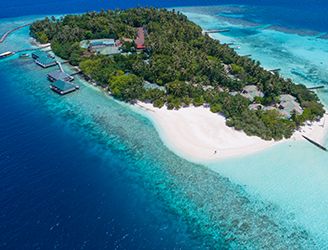
Embudu Village
from £1845
Embudu Village is where simplistic Maldivian style meets personalised hospitality. Accessed by short boat ride into South ...
VIEW DETAILSMeeru Island Resort and Spa
from £2395
Meeru Island Resort sits on a protected beautiful blue lagoon, with a long white sandy beach. Exotic calls from tropical b...
VIEW DETAILS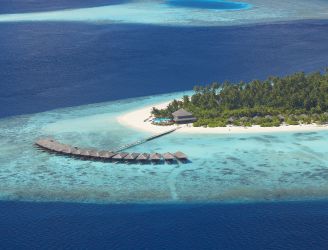
Filitheyo Resort
from £2395
Filitheyo has been developed with careful consideration to its environment and is a popular choice for divers and holidaym...
VIEW DETAILS
Medhufushi Resort
from £2325
Currently one of only two islands with tourist developments on the Meemu Atoll, Medhufushi island lies on the eastern side...
VIEW DETAILS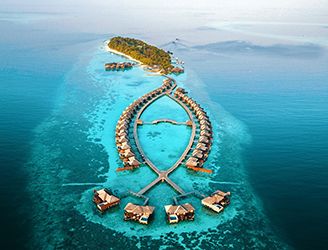
Lily Beach
from £4945
Amidst the blue lagoons of South Ari Atoll, Lily Beach Resort & Spa is an award-winning, luxury resort with world-clas...
VIEW DETAILS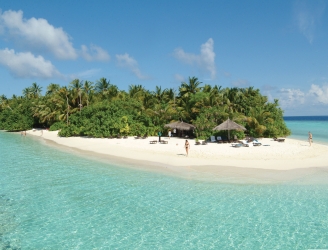
Vilamendhoo Island Resort & Spa
from £2495
Vilamendhoo Island Resort & Spa is surrounded by a beautiful lagoon & white sand beach. Enjoy regular day trips fo...
VIEW DETAILS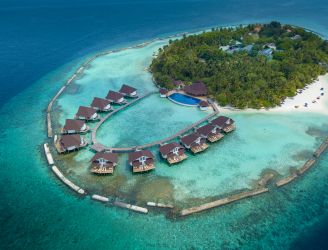
Ellaidhoo Maldives by Cinnamon
from £2295
Located in North East Ari Atoll, Ellaidhoo island combines a simple relaxed atmosphere with range of facilities.
VIEW DETAILS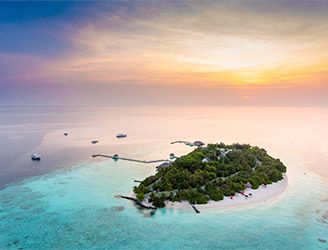
Eri Maldives (formerly Eriyadu Resort)
from £2045
Eri Maldives combines ocean adventure with island luxury, just 45 minute speed boat from Male this mordern resort let’s ...
VIEW DETAILSBoutique Beach
from £2845
Boutique Beach is a small hotel designed, built and run by divers for divers. Located on Dhigurah, the hotel is in the mid...
VIEW DETAILS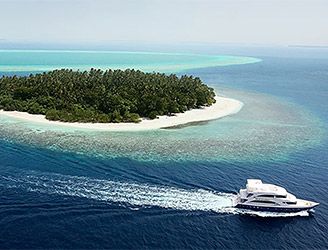
M/V Emperor Voyager
from £1929
M/V Emperor Voyager sails from Male & is a modern, spacious liveaboard built to a high standard, accommodating 20 gues...
VIEW DETAILS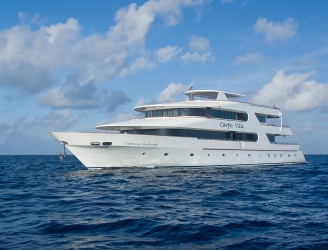
MV Carpe Vita
from £1616
M/V Carpe Vita is a luxury 38m motor safari yacht and the sister vessel of the M/V Carpe Diem. She has a total of 10 cabin...
VIEW DETAILS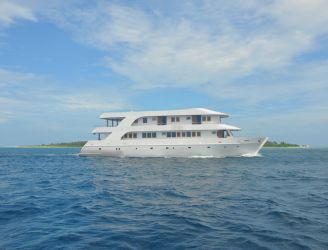
MV Keana
from £1752
MV Keana is a new 31m vessel built specifically for diving by a very experienced team. She offers high standards of comfor...
VIEW DETAILS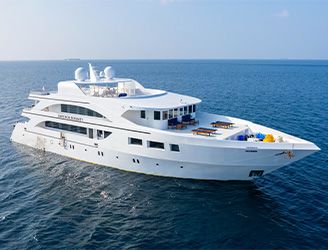
M/V Emperor Serenity
from £2321
M/V Emperor Serenity sails from Male & is a spacious liveaboard built to a high standard, accommodating a maximum of 2...
VIEW DETAILS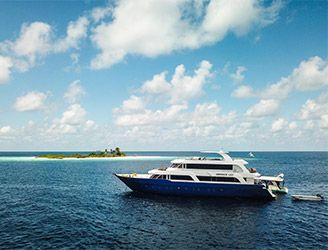
M/V Emperor Leo
from £2061
Built to a high standard for today's discerning diver, M/V Emperor Leo offers good comfort and is an ‘excellent value’...
VIEW DETAILS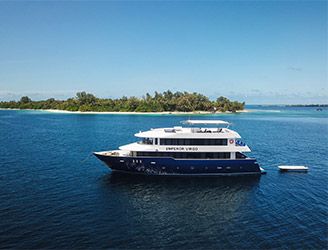
Emperor Virgo
from £2061
M/V Emperor Virgo is ideal for groups, as she accommodates a maximum of 18 divers in lower and upper deck twin or double c...
VIEW DETAILS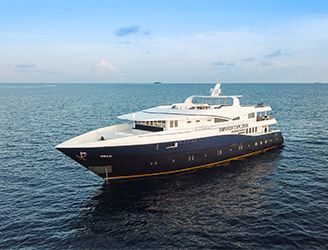
M/V Emperor Explorer
from £2190
The stunning Emperor Explorer blends exceptional diving with on-board luxury for discerning divers. She accommodates 26 di...
VIEW DETAILS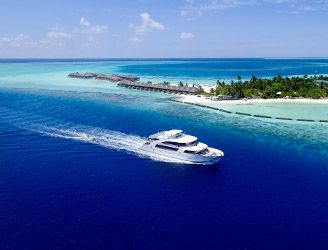
Carpe Novo
from £1721
Spacious and luxurious, this vessel brings you the best of the Maldives and offers some special itineraries in style and c...
VIEW DETAILS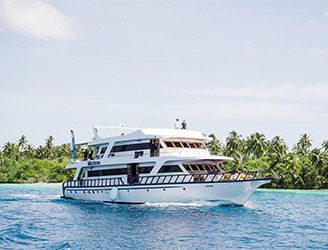
Mariana
from £1327
With the right blend of modern and traditional, this newly renovated vessel offers a superb diving home for guests to expl...
VIEW DETAILS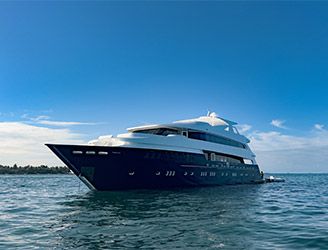
Seascape
from £1469
Launched in 2023, this exceptional liveaboard combines luxury and sustainability, with itineraries ranging from 7 to 14 ni...
VIEW DETAILS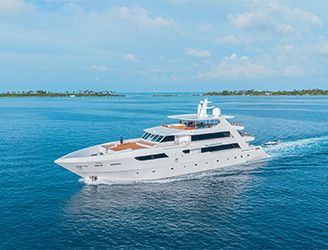
Maldives Master
from £1502
The versatile Maldives Master is a modern, spacious, and comfortable liveaboard. The vessel and supporting Dhoni cruise th...
VIEW DETAILS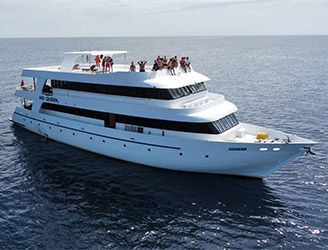
MV Ari Queen
from £1495
Ari Queen, is a 'basic' standard liveaboard. Offering great diving, this boat comfortably accommodates up to 20 divers in...
VIEW DETAILSMV Carpe Diem
from £1525
This beautiful & spacious 35m liveaboard accommodates up to 20 guests. The boat has four decks including a partially s...
VIEW DETAILS
Amba
from £1938
Amba offers divers a comfortable journey as she cruises the Maldives visiting the central & southern atolls & spec...
VIEW DETAILS
